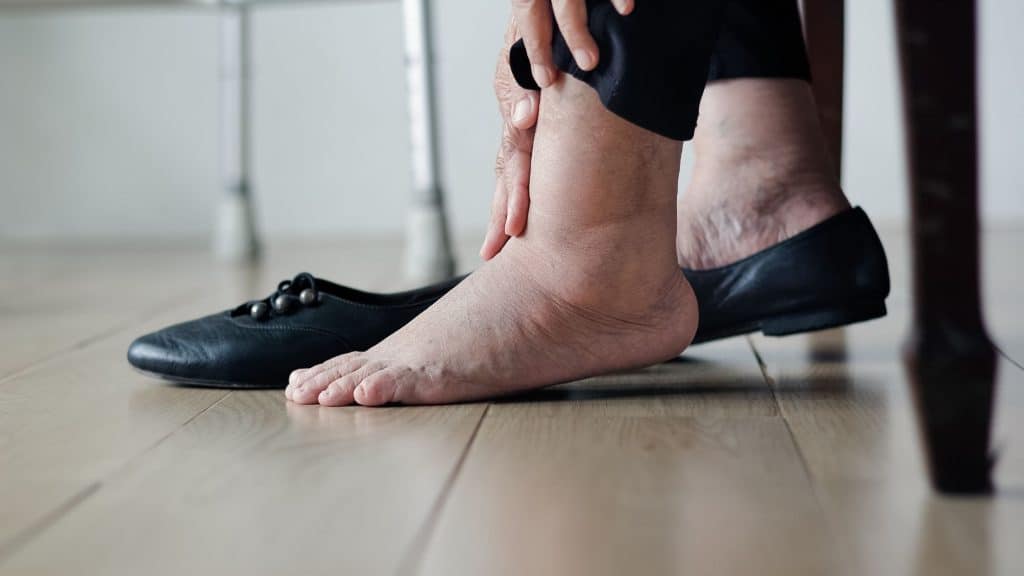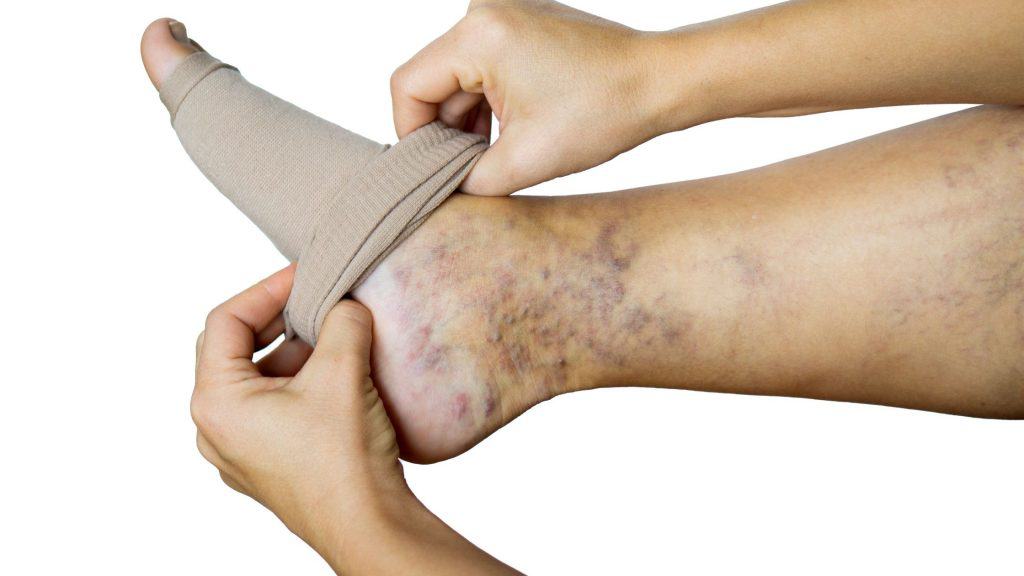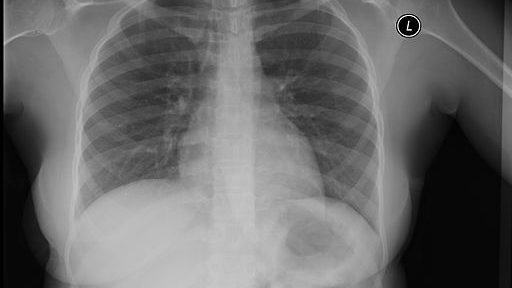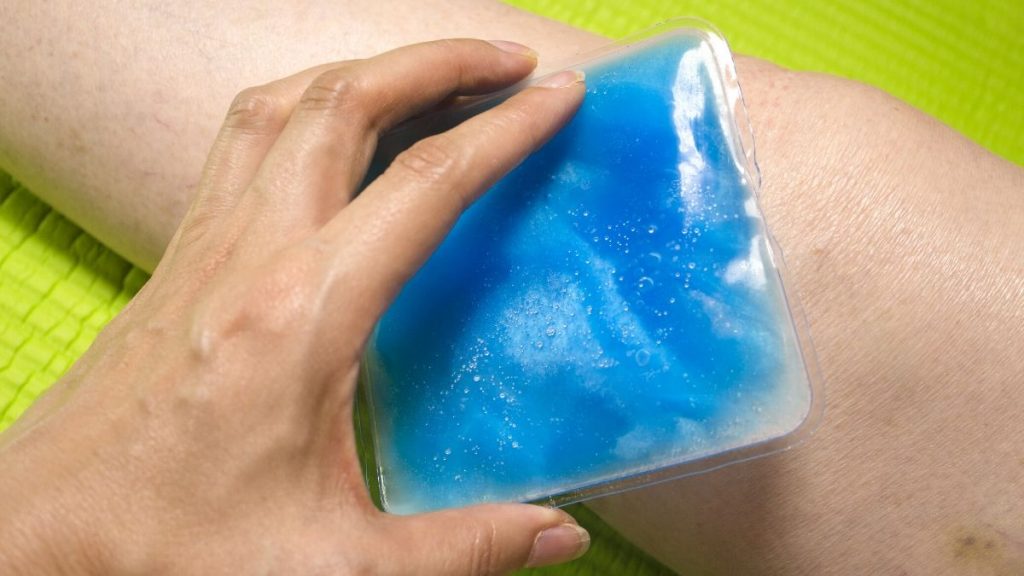Last updated on June 19th, 2025 at 06:01 pm

Key Takeaways: Swollen Feet Treatment
✔️ Cold water reduces recent swelling (vasoconstriction)
✔️ Heat therapy helps chronic fluid retention (vasodilation)
✔️ Contrast baths (alternating hot/cold) are most effective for stubborn edema
✔️ Elevate legs above heart level for 20 mins, 3x daily
✔️ Compression socks prevent fluid buildup during long sitting/standing
✔️ Massage upwards toward the heart to improve lymphatic drainage
✔️ See a doctor if swelling is sudden, one-sided, or painful
(Scroll down for detailed home remedies & step-by-step guides!)
Swelling in the feet is easy to develop but very difficult to get rid of, and misinformation further complicates the treatment of swollen feet. It may not create that much pain, but it can considerably affect the movements of fingers and feet. More so, swollen feet don’t look good.
In this article, we will learn some of the most effective home tips to get rid of those stubborn swollen feet.
- Key Takeaways: Swollen Feet Treatment
- How Heat and Cold Affect Swelling
- When to Use Ice vs. Heat for Swollen Feet
- Why Alternating Hot and Cold Reduces Swelling
- How to Do a Contrast Bath at Home
- Elevate Your Feet: Best Sleeping & Sitting Positions
- Use of pressure socks or stockings
- Foot Massage Techniques to Reduce Fluid Retention
- FAQ: Hot or Cold for Swollen Feet?
How to Relieve Swollen Feet and Ankle Pain
The most common cause of leg swelling is oedema, but all or part of a limb may expand due to an increase in any tissue component (muscle, fat, blood, etc) 1.
Oedema occurs when fluid builds up in the tissues, and it may happen suddenly or develop slowly and last for months or years.
Most frequently, oedema is a result of harmless conditions, but occasionally it is caused by more serious underlying health problems2.
What Causes Swollen Feet? Common Reasons Explained
Swelling of the leg may involve both legs or a single leg. Oedema of both legs is commonly due to dependent oedema. This type of swelling develops when a patient sits or stands for prolonged periods2.
Oedema in one leg may be commonly due to DVT (Deep Venous Thrombosis). However, it can also be due to internal injuries like a hairline fracture or ligament injury around the ankle.
There
- Old internal fracture.
- Very old injury around the feet and ankle.
- Immediately after plaster opening (in a bone fracture case).
- Swelling due to hereditary angioedema,
- Rheumatoid hand or other disease processes.
Doctors usually recommend a hot bath or a cold bath for swollen feet treatment, depending on the condition. But, which condition will be better for a hot bath and which condition will best respond to a cold bath?
Hot or Cold Water for Swollen Feet: Which Works Better?
Using hot or cold water for swollen feet has been practised since ancient days. But, unfortunately, there’s a lot of confusion on whether to use hot or cold or both hot and cold, and what is the proper way of its application?
Here I am going to share my 12 years of experience in dealing with it using hot or cold water with a scientific explanation. For this, we first need to understand the effect of heat and cold on our bodies.
How Heat and Cold Affect Swelling

Different temperature has different effects on our body. When our body is exposed to a lower temperature, the blood vessel gets contracted to limit the blood flow, which is called vasoconstriction.
The opposite happens when exposed to hot temperatures; the blood vessels dilate. It’s called vasodilatation, and it increases the flow of blood.
When to Use Ice vs. Heat for Swollen Feet
This explains why, if you have a recent injury, we recommend ice /cold therapy for two to three days after injury (injury to any body part). This not only helps in the reduction of swelling it also gives immense relief from pain.
In chronic pain like neck muscle spasm, shoulder stiffness, and low backache, we advise hot treatment.
But, in this article, we are concerned about swollen feet, and we have already discussed its causes. For this condition, we suggest a
Contrast Bath Therapy for Swelling: Step-by-Step Guide
Why Alternating Hot and Cold Reduces Swelling
We also call a hot and cold bath a contrast bath. It is a therapeutic technique of giving hot treatment and cold treatment in an alternating fashion so as to reduce swelling and thereby reduce the pain.
First, immerse the treating part in cold water and then in hot water for a particular time duration. It is done in an alternate manner till the temperature of both the waters becomes normal.
For a more detailed procedure, please follow this article How to Contrast Bath Therapy for Hand & Foot Swelling.
Referring to vasoconstriction and vasodilatation, when our body is exposed to both in an alternate manner, then there alternately occurs vasoconstriction and vasodilatation.
This alternate vasoconstriction and vasodilatation gives and massage effect, thereby pumping away lymphatic fluid. Accumulation of lymphatic fluid is the actual cause of the
How to Do a Contrast Bath at Home
The technique of contrast bath for swollen feet treatment is very simple. Let’s discuss it in the step-by-step method.
- Step 1: Take two bowls, they should be large enough so that you can dip your palm or foot.
- Step 2: In one bowl, fill it the normal water and put some ice cubes in it. Allow the water to get chilled.
- Step 3: In another bowl, take warm water. The temperature of the water should be around 45- 50 degrees Celsius.
- Step 4: Start with cold water. Dip your body part in cold water. Keep it for 1 minute.
- Step 5: After 1 minute, take out the body part and dip it in warm water. Again, keep it for 1 minute.
- Step 6: Repeat this process till the water in both the bowls comes to normal temperature.
- Step 7: End it in cold water.
Note: Please make a note that you have to start in cold water and also end in cold water.
5 Proven Home Remedies for Swollen Feet
Elevate Your Feet: Best Sleeping & Sitting Positions

In swollen feet treatment, you must take care of your sitting and sleeping position. If you need to sit for a long hour then you must take care that your legs do not remain in a hanging position.
The Hanging position of the legs increases
So the question is how to set if you have swollen feet?
The answer is very simple: you have to avoid hanging the leg, and this can be achieved by keeping the leg elevated. So what you have to do is to take another chair or stool in front of where you are sitting and place your leg over this stool.
Likewise, during
- Height-Adjustable Leg Wedge Pillow: We designed the legs pillow to be adjustable so that you can choose the suitable ele…
- CertiPUR-US Certified Memory Foam: The top layer of the wedge pillow is filled with gel memory foam, keeping cool and dr…
- Multipurpose Ergonomic Leg Rest Pillow: The both legs pillow is designed with a perfect incline to fit the contour of th…

Use of pressure socks or stockings

The use of pressure socks and or compression garments is also very helpful. If you need to travel or if you are an overly occupied person who is unable to take care get these pressure socks or stockings and wear them inside your shoes or inside your clothing.
Pressure stockings create equal pressure around the feet, thereby preventing any accumulation of fluid in the feet. Regular use can reduce swelling of the feet by 50%.
- Truform 1772; ladies fashion style support hose; dress nylons; 15-20 strength Graduated Compression
- Soft top will not constrict leg; defined Heel enhances fit; easy inspection sandal wear Toeless Foot
- Improves circulation for extended sitting, standing, travel, pregnancy, muscle recovery, swollen feet

Foot Massage Techniques to Reduce Fluid Retention
Massage of the feet is one of the very old and very effective methods. If you have someone else to massage your feet, the best position would be to keep your leg elevated over the pillows in a sleeping position.
For self-massage, sit on a comfortable chair or a bed and place your feet over the opposite leg and massage it using
We also recommend the use of an air-compression calf foot massager, which is equally effective. It’s a portable unit that you can carry with you anywhere, and it is very easy to use.
It’s better if you watch this video on how to use an air-compression calf foot massager at home.
Final word
Use the technique I have mentioned. I have applied it to many of my patients and found tremendous improvement in both the pain and swelling. But, it may not work in all swelling cases.
Have you tried hot or cold therapy for swelling? Share your experience below!
Keep Reading: What causes varicose veins, 5 Best Exercises for Spider Veins
FAQ: Hot or Cold for Swollen Feet?
The author is a physiotherapist who has been practising for the last 17 years. He holds a Bachelor's in Physiotherapy (BPT) from SVNIRTAR (Swami Vivekananda National Institute of Rehabilitation and Research), one of the prestigious physiotherapy schools in India.
Whatever he learns dealing with his patient, he shares it with the world through blogs and e-books. He also owns a YouTube channel, "Sunit Physiotherapist" with over 8 lakh active subscribers. Here, he shares everything he gets to learn serving the patient.








Is Shea butter also good for leg pain injury.
Thank you for info and for sure I will work with this info. I have no ankle bone as it has been swollen for months,my feet hurt all the time and right now that when I sit for my meals and get up I can barely put any weight on my left foot also getting out of bed in the a.m the pain is almost unbearable.I have been soaking my feet in warm water all this time but never with cold so now I am going to do the cold to cold….
Thank you so much
Thank you so much for sharing..AsI have just come out from plaster it will help me to come out from pain and swelling and stiffness of my foot.
Nice post, Thank you for sharing valuable information. I enjoyed reading this post. The whole blog is very nice found some good stuff and good information here Thanks for sharing…Also visit my page.
Premium Folding Wheelchair